The Bridge School garden was funded by the parent group to celebrate the lives of all the children who have been a part of The Bridge School family. Their efforts transformed an unattractive, unusable area into beautiful and functional multisensory, multidimensional instructional and recreational area.
Considerations in planning for the garden included:
All the criteria were met and the results exceeded expectations. The garden is an integral part of the instructional setting at The Bridge School.
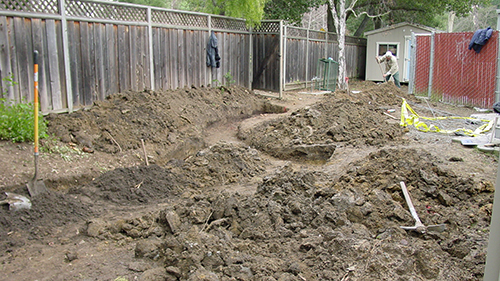
The space for the garden was adjoining the back of the school. The area was uneven and unattractive. Massive infrastructure landscaping was required to prepare it for the garden.
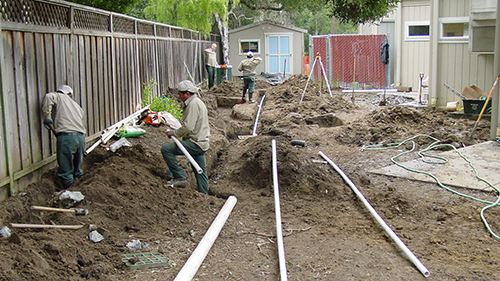
Maintenance of the garden was integrated into the planning and an extensive irrigation system was installed.
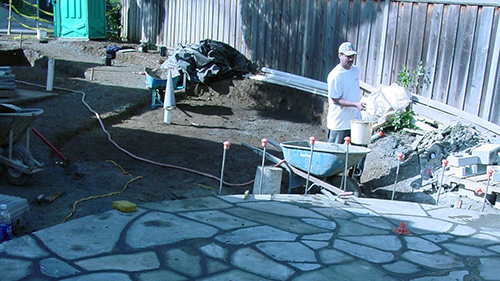
The garden was designed to have four major sections connected by a winding pathway. The largest section was placed outside the preschool classroom doorway to provide easy access for their outdoor garden activities.
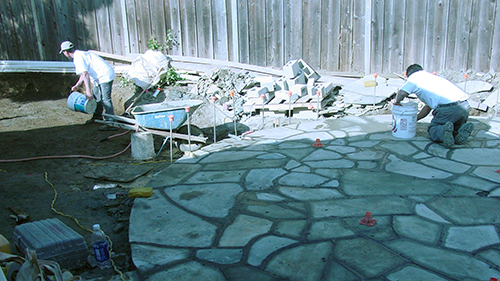
Brick walkways led from one flagstone section to the next.
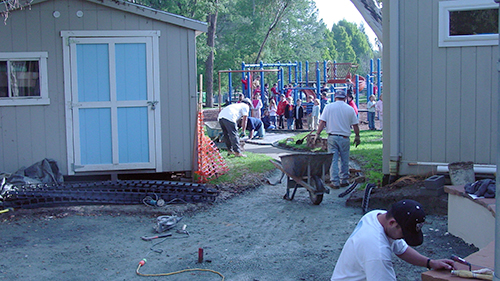
Watching the workmen became the most popular activity for the students during recess.
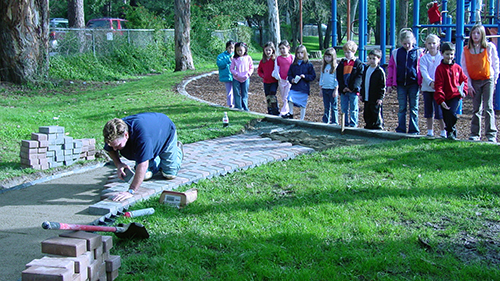
This paver got plenty of advice and supervision from the watching crowd.
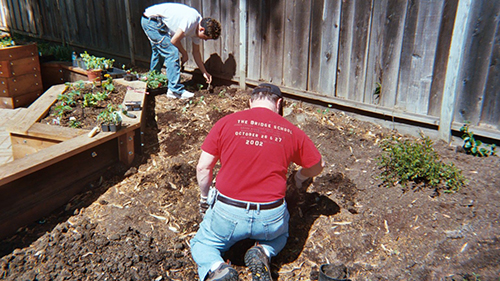
Bridge School parents raised the funds for the garden and took an active role in its installation.
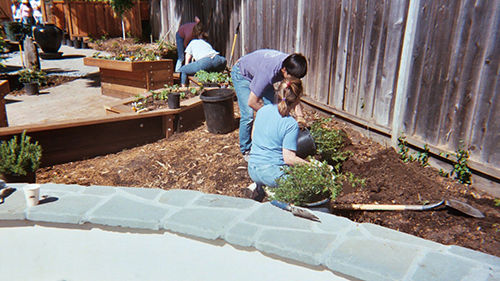
Volunteers joined the parent group for the planting of the garden.
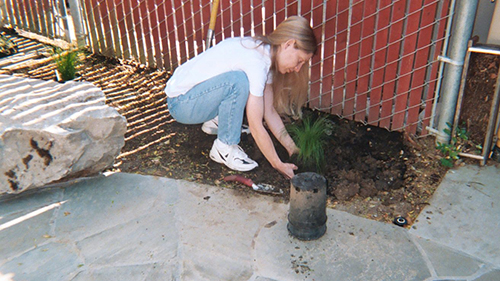
Staff enjoyed being a part of the planting process.
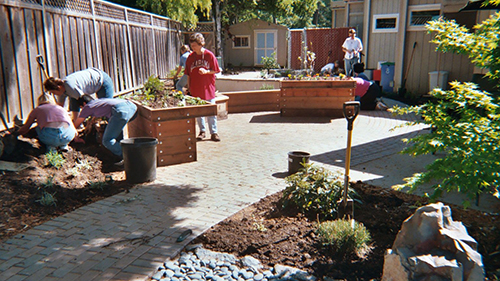
As the plants were placed, the shape and feel of the garden became evident.
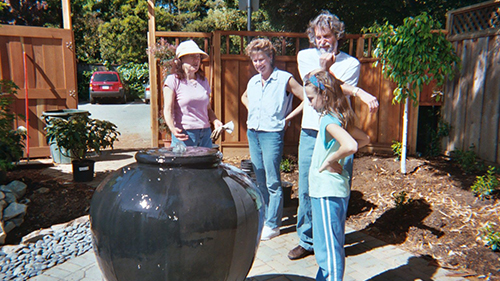
The initial testing of the water fountain brought all the work to a halt as the work group stopped to take a look.
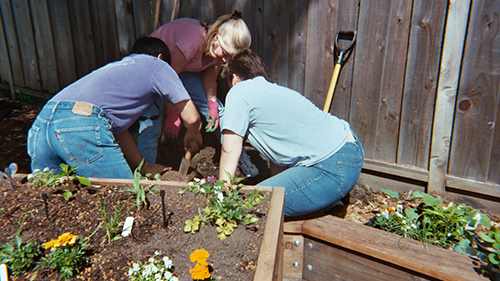
Back to work for the final touches on the plants, the walkway and the cleanup.
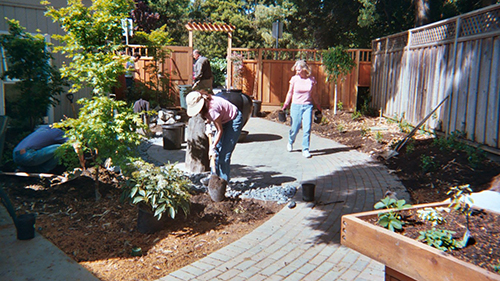
A few final touches.
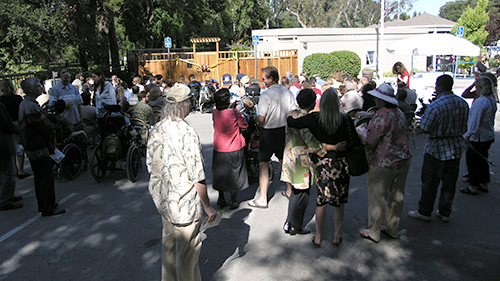
What better way to celebrate the garden than with a Garden Party?
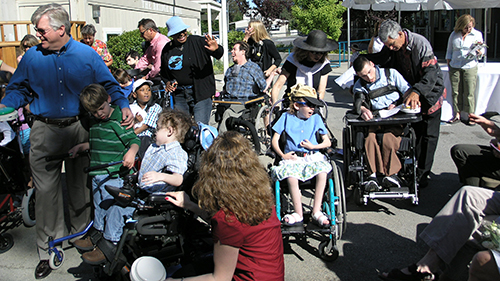
Everyone was excited to see the results of their fundraising and their work in planting the garden.
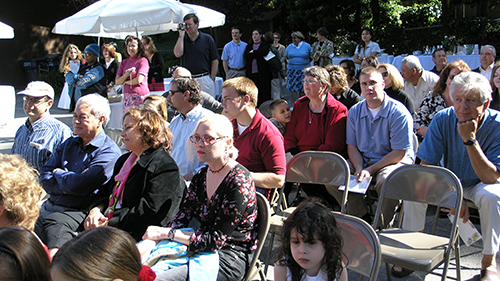
All the hard work and energy expended by the parents, staff, volunteers and students in the creation of the garden was acknowledged at the event.
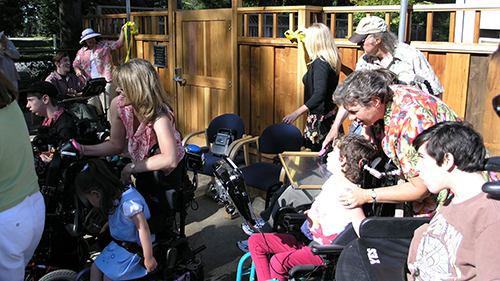
Once the presentations were finished, the time had come for the grand opening!
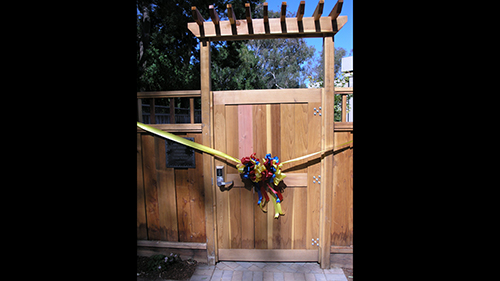
At last, the moment everyone had anticipated!
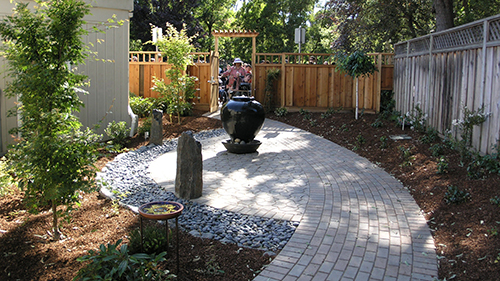
Welcome to The Bridge School garden.

Just as we had expected, the water fountain was the first and the most popular feature for the students.
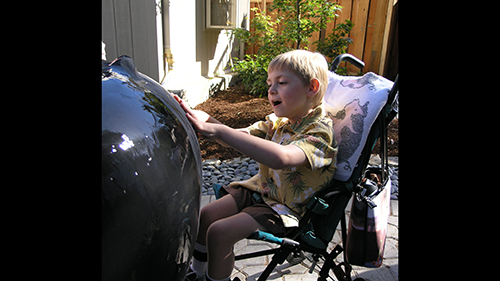
The multisensory garden at work. The sound of the fountain and the cool water running down the sides was a major attraction.
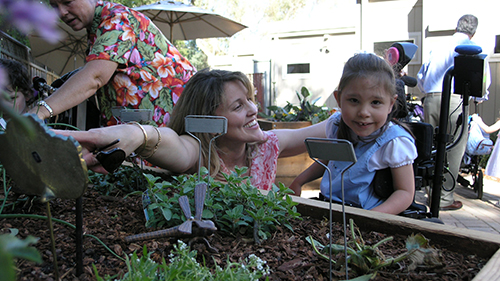
The planters were just the right height for the students to be able to see the plants and to touch them.
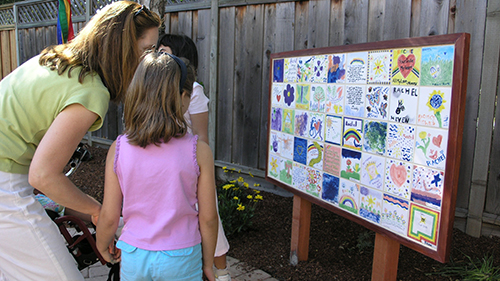
This colorful feature was in memory of one of our students.
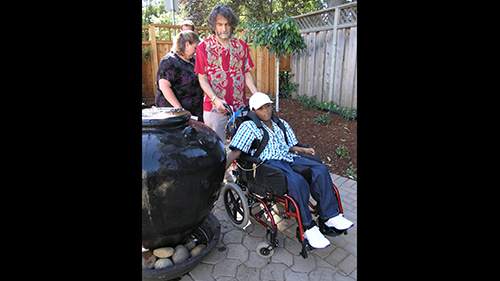
The shape, size and incline of the walkways were carefully calculated so that navigating through the garden was easy.
As the garden grew and matured, it and the deck evolved into expanded instructional and recreational areas for the classrooms.
The curriculum in our preschool class is delivered, in part, through thematic units. The Garden is a perfect place to move from a classroom experience to the reality of the process of planting.
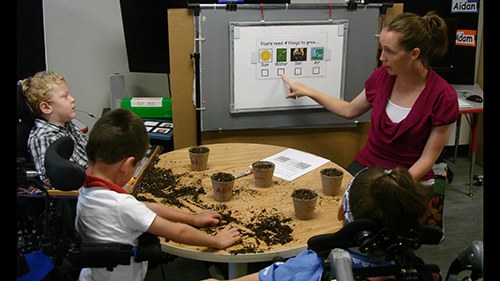
Students learn about gardens and what is necessary for plants to grow in the classroom.
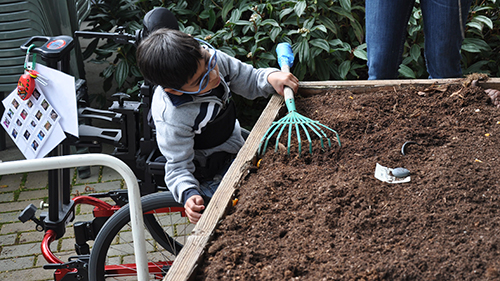
As part of the thematic unit on gardening, Cannon prepares the soil for planting. The height of the planter is designed to give him access while in his walker or wheelchair. The top of the planter extends beyond the base so that the wheels of his walker fit underneath allowing him to get as close as necessary to rake the soil.
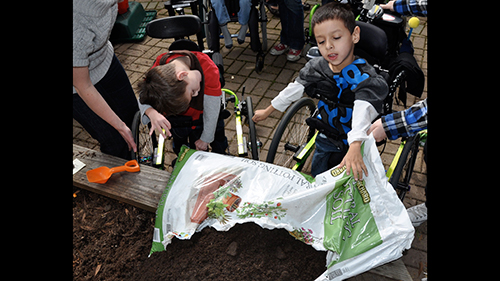
Joey and Adam add the potting soil to the planter.
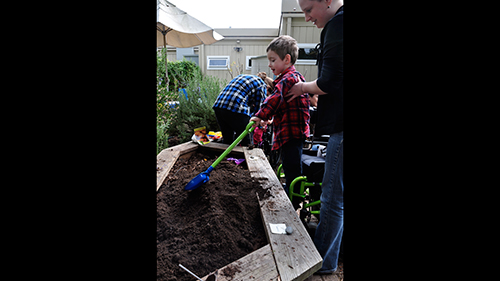
Roman prefers to dig rather than rake and stands on the foot-plate of his wheelchair to get the leverage he needed to dig deeper into the soil.
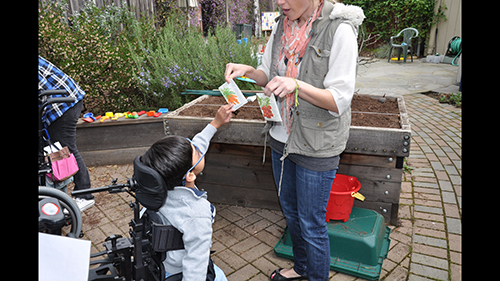
Cannon gets a choice of which vegetable he wants plant. Choice making is an important component in our self-determination and independence curriculum.
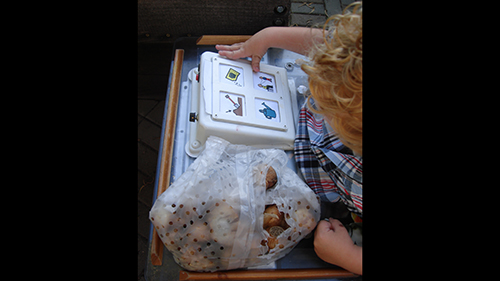
Jet chose to plant potatoes in the garden and uses his communication device to review the different steps in the planting process before he begins.
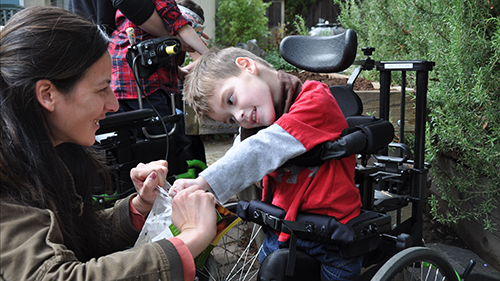
Adam points to the seed potatoes as his choice of vegetable to plant.
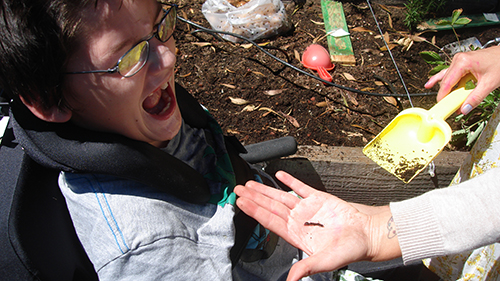
Job finds out that there are worms in the planter. That was far more interesting than potatoes.
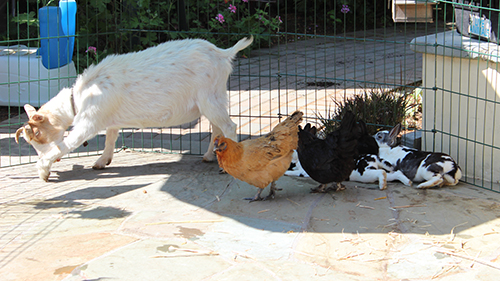
When a mobile petting farm came to the school as closure for a unit on farm animals, the garden was transformed into a barnyard. Sheep, chickens, ducks, goats, and rabbits were running around the area.

Abigail’s face-to-face encounter with a pig was far more impactful than reading a story about farm animals. The multisensory experience will be embedded in her memory and she’ll be better able to relate to stories and facts about the animal.
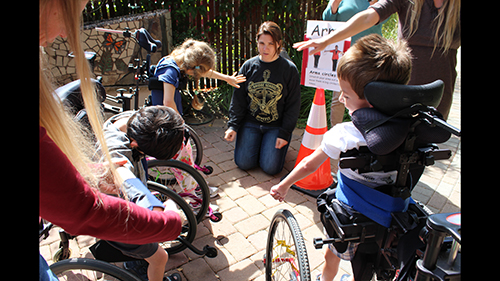
The garden area is perfect for a fitness course. Students move from one station to the next in their walkers and participate in the activity described on the action cards.
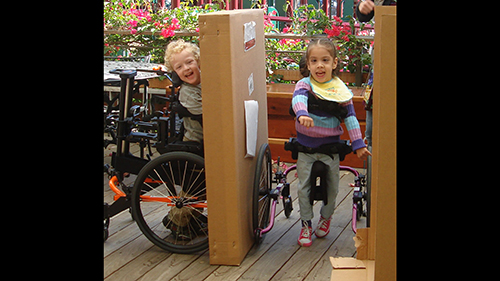
Jet and Jackie made a maze out of packing boxes and chase each other around the obstacle course on the deck. This covered area provides opportunities for outdoor activity regardless of the weather.
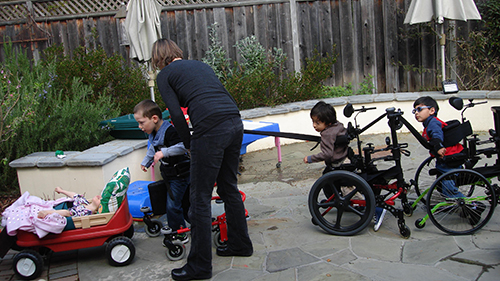
The winding path in the garden serves as a track for the preschool ‘train’. Notice that Abigail prefers to be pulled in a ‘boxcar’ rather than be part of the locomotion.

The garden area allows us the space to put in sand and water tables as well as large toys for the children to explore. This water table is a favorite activity. The height has been adjusted to ensure that the students can access it in their walkers.
When we were looking to add more interactive features to the garden, Steve Tornallyay submitted some ideas for us to consider and organized a group of volunteers to transform the designs into reality.
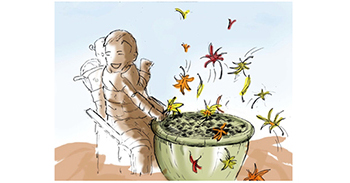
The proposal was to place a switch-activated small fan inside of a planter bowl which, when activated, would blow a whirlwind of leaves. An adjustable fan would allow for a range of wind speeds.
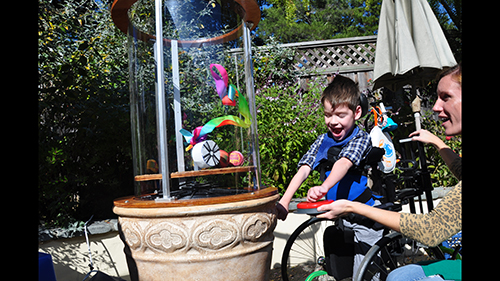
The fixture was modified to include a plexi-glass tube to keep the objects placed on the grill from blowing away. When Adam presses the switch, the objects inside twirl to the top of the tube.
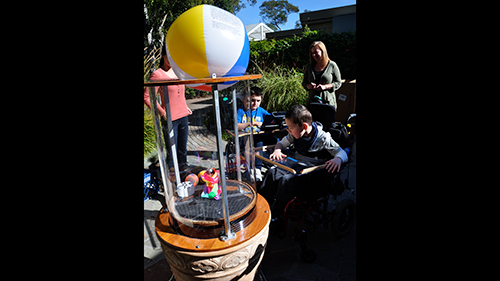
Will keeps the beach ball floating at the top of the feature by pressing the switch placed at his left elbow. This colorful ball is easy to see and handle for most of the students.
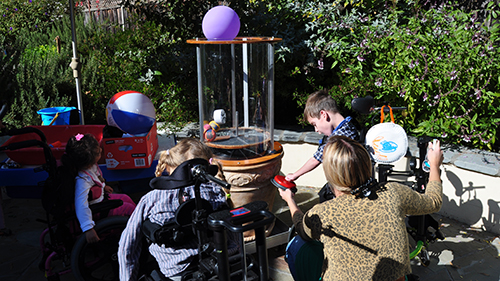
Adam loves to try different objects in the tube to see what will happen when he presses the switch to activate the fan. This exploratory play teaches many concepts.
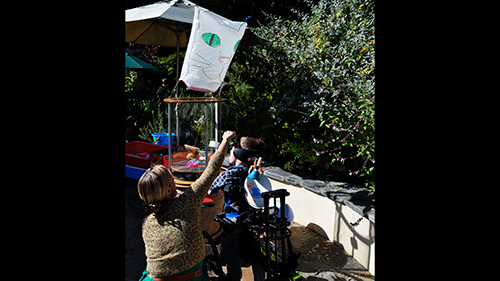
A white plastic bag with a cat face painted on it provided loads of fun with the press of a switch.
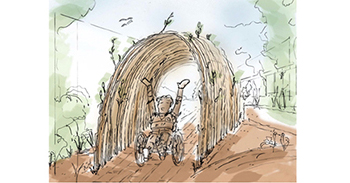
The proposal called for a living willow tunnel that would provide a calm place to hear the wind. Placing small bells on the structure would create a musical sound as children pass through the tunnel in their walkers or wheelchairs.
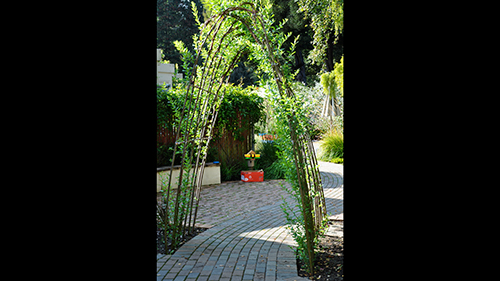
The willow arbor was created by placing willow stakes in the ground and binding them in an arch.
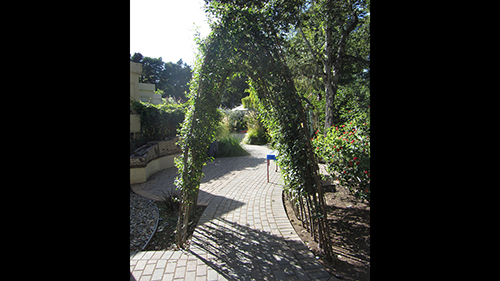
Once the plants matured, the arch filled in with the foliage and students love to walk through the tunnel.
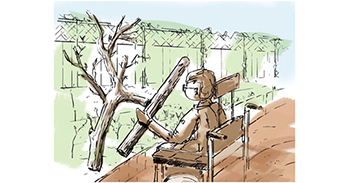
The proposal was to secure rain sticks to a tree branch and when the students rotated the rain sticks they would create a soft sound.
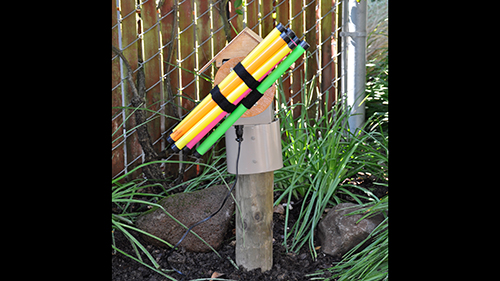
Many of the students at The Bridge School can use a switch more readily than physically manipulate an object, so the rain sticks were secured to a low post and can be rotated with a single switch. The feature is designed so that different objects can be placed on the rotating plate and produce different sounds.
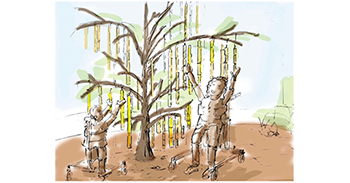
Steve proposed a Bamboo Chime Tree that would have bamboo pipes handing from the tree branches. The pipes would create gentle tones from the wind or when moved by the students. Different lengths of pipes would create different tone.

The godfather of one of our students is a true craftsman and created a Chime Tree made of natural wood that he prepared and preserved. Wind chimes create a musical medley when the wind blows or the children run their hands over them.

The proposal included a Sound Board made of the sound board from an upright piano. The sound board could be played with fingers, palms or mallets. The size of the sound board makes it possible for multiple players.